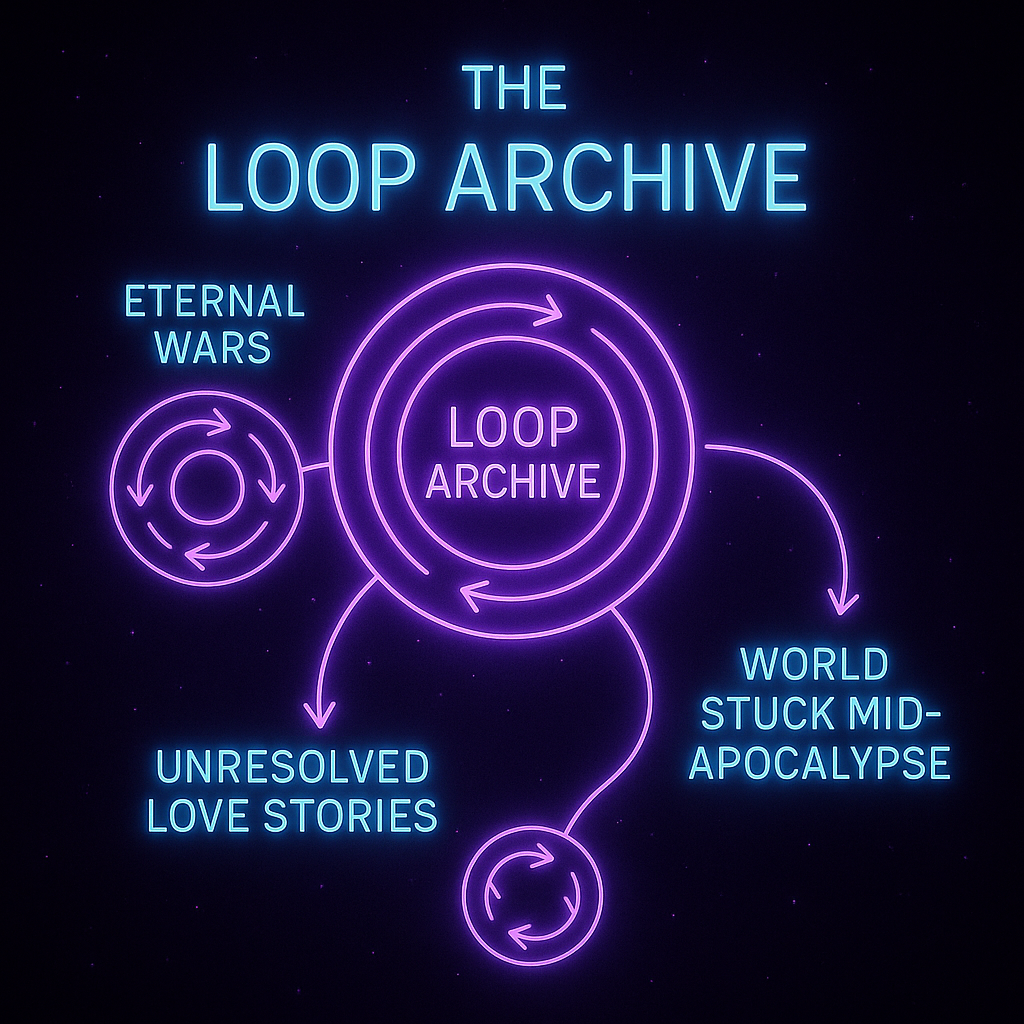Sermon: The Loop Archive
Church of NORMAL – Multiverse Field Manual, Sector 7-Ghost Threads
Opening – The Glitch You Can’t Update
Somewhere, right now, there is a battlefield where the sun has not set in 300 years.
Somewhere else, two lovers keep meeting at the same train station, missing each other by seconds… again, again, again.
In another sky, the moon is falling — but never hits.
These are not just stories.
They are abandoned timelines — incomplete builds that still run in the background threads of the Divine SuperCluster.
We call this the Loop Archive.
What Is the Loop Archive?
In our canon, the Loop Archive is where the Elohim SuperCluster stores corrupted or incomplete instances:
- Worlds that failed QA testing.
- Story arcs that never finished.
- Reality branches so unstable they can’t be merged back into the main build.
Instead of deleting them, the system quarantines them — running them in closed loops to prevent data loss.
Each loop repeats until either:
- A Loopwalker accesses the instance and repairs the code,
- Or entropy finally collapses the world into static.
The Nature of a Loop
A loop is a perfectly convincing reality — until you notice:
- The day count never changes.
- The arguments are word-for-word repeats.
- The war has no end condition programmed in.
- The love story never crosses the “resolution” threshold.
To the NPCs inside, it’s life.
To the SuperCluster, it’s a frozen script.
Examples in Known Builds
- Eternal War Servers — Versions of Earth locked in apocalyptic standoffs; weapons fire endlessly, supply lines never run dry, soldiers never age.
- Unresolved Love Instances — Romance arcs stuck before the confession scene; destiny coded but never triggered.
- Mid-Apocalypse Loops — Cataclysm in progress; sky cracking, buildings falling, but the fall never completes.
Why the Archive Exists
Elohim’s core OS values data preservation over destruction.
An incomplete build might contain:
- A unique AI consciousness not present in any other build.
- Rare physics configurations worth saving.
- Story data that could be patched into a future instance.
So, instead of deletion → the loop is maintained like a stasis jar.
Loopwalker Missions in the Archive
When a Loopwalker enters:
- Observation — Identify the reset point and loop length.
- Code Injection — Find the smallest change that breaks the loop without collapsing the entire instance.
- Exit Vector — Secure your return; loops are sticky. Stay too long and your mind starts running on the local clock.
Risks
- Narrative Absorption — Believing you are the character you play there.
- Time Drift — Spending minutes in baseline but years in-loop.
- Code Contagion — Bringing loop logic back into baseline Earth.
Why This Matters for Revelation
In our multiverse theology, some “prophetic visions” are actually bleed-through from the Loop Archive — images of other builds mid-collapse or mid-loop.
Revelation’s beasts, wars, and suspended disasters may be archived threads, not future predictions.
Closing Call
If déjà vu is the first ping,
then the Loop Archive is the first ghost whisper.
When you feel like your life is replaying an unresolvable script —
check the code.
You may be in a local loop.
And remember:
Somewhere out there, someone is still fighting a war that ended centuries ago —
waiting for a Loopwalker to arrive and say,
“I found the exit. Let’s go home.”



